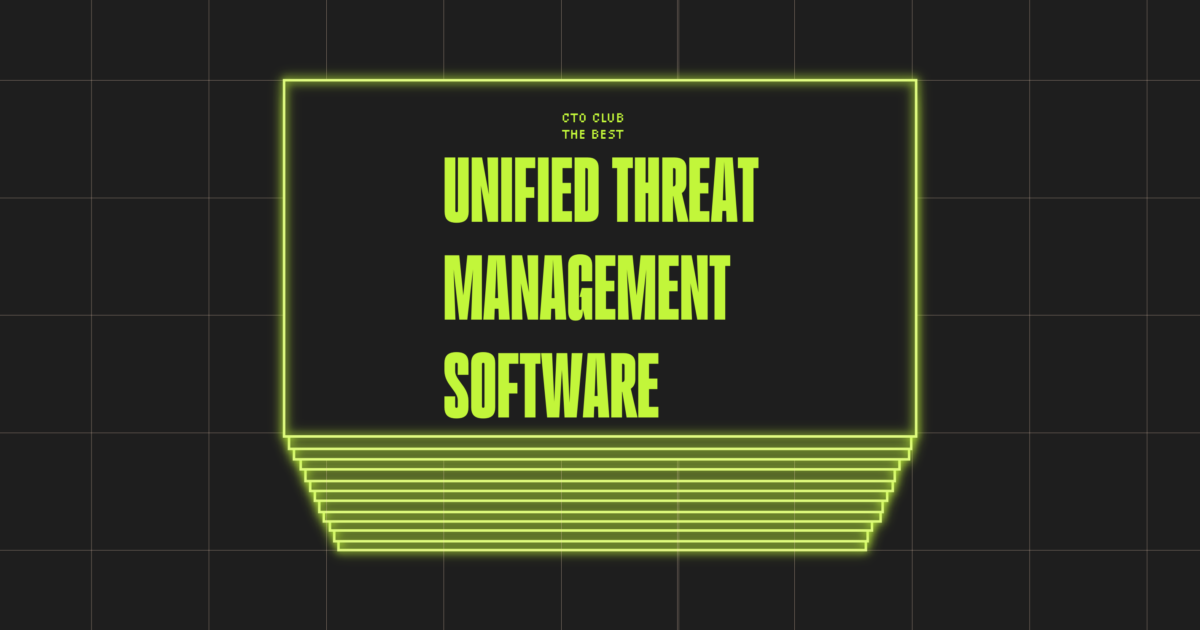Are you tired of juggling multiple security solutions, each addressing a different threat but creating a management nightmare? In today’s complex digital landscape, businesses face a relentless barrage of cyberattacks, from malware and phishing scams to sophisticated intrusions.
Managing these threats individually can be overwhelming, costly, and ultimately, ineffective. That’s where Unified Threat Management (UTM) software comes in. UTM solutions consolidate essential security functions like firewalls, intrusion detection and prevention, VPN, and web filtering into a single, streamlined platform.
This article will explore the benefits of UTM software, examining how it simplifies security management, enhances protection, and ultimately, saves you time and money. Discover how UTM can be the cornerstone of your comprehensive cybersecurity strategy and learn how to choose the right solution for your business needs.
Get ready to simplify your security and fortify your defenses with the power of unified threat management.
Understanding Unified Threat Management (UTM) Software
Navigating the digital landscape requires robust protection. Unified Threat Management (UTM) emerges as a critical solution. It consolidates various security functionalities into a single appliance.
UTM streamlines your security infrastructure. Instead of managing separate firewalls and intrusion detection systems, you have one central system. This simplifies administration and reduces complexity.
Think of UTM as a security command center. It monitors network traffic, identifies threats, and takes immediate action. This proactive approach is key to preventing breaches and data loss.
UTM’s core principle lies in its integrated approach. It leverages multiple security layers for enhanced defenses. This comprehensive approach is a powerful deterrent against modern cyberattacks.
From small businesses to large enterprises, UTM adapts to diverse needs. It provides scalable protection, ensuring your organization remains secure. Choose a UTM that aligns with your resources and requirements.
Key Features of UTM Solutions
UTM solutions boast a range of features. Firewalls are the cornerstone, examining network traffic and blocking malicious connections. They serve as the first line of defense.
Intrusion detection and prevention systems (IDS/IPS) are critical. These tools actively monitor for suspicious activity and block attacks. They help prevent unauthorized access and data breaches.
Antivirus and anti-malware capabilities are indispensable. They protect against viruses, worms, and other forms of harmful software. Regular updates are essential for optimal defense.
Virtual Private Network (VPN) support provides secure remote access. This enables employees to connect to the network safely from anywhere. Encrypted connections safeguard sensitive data.
Web filtering restricts access to inappropriate or malicious websites. It helps maintain productivity and reduces the risk of malware infections. This is crucial for enforcing company policies.
Spam filtering blocks unwanted emails, reducing clutter and phishing attempts. This saves time and minimizes the risk of users clicking on malicious links. A clean inbox enhances efficiency.
Benefits of Implementing a UTM System

Cost savings are a significant advantage. Consolidating security features into one appliance reduces hardware and software expenses. It’s a smart financial move.
Simplified management is another key benefit. A single interface makes it easier to configure, monitor, and update security policies. This saves time and effort for IT staff.
Improved security posture is a direct result of UTM. A layered defense approach provides more comprehensive protection. This minimizes the risk of successful attacks.
Enhanced network performance can also be achieved. UTM optimizes traffic flow and reduces latency. This results in a faster, more responsive network experience.
Compliance with industry regulations is often easier with UTM. Many regulations require specific security controls, which UTM can help meet. It simplifies audit processes.
Proactive threat detection enables faster incident response. UTM identifies threats early, allowing you to take immediate action. This minimizes the impact of security incidents.
Choosing the Right UTM for Your Business
Assess your specific security requirements. What threats are you most concerned about? Understand your vulnerabilities before making a decision. Tailor the solution to your needs.
Consider the size and complexity of your network. A small business may only need a basic UTM, while a large enterprise requires a more robust solution. Scalability is key.
Evaluate the UTM’s performance capabilities. Can it handle your network traffic without slowing things down? Performance testing is critical before deployment.
Look for ease of use and management. A user-friendly interface simplifies configuration and monitoring. It saves time and reduces the learning curve for IT staff.
Research the vendor’s reputation and support services. A reputable vendor provides reliable products and timely assistance. Choose a vendor with a proven track record.
Check for features like reporting and logging. Detailed reports provide valuable insights into network activity and security incidents. This helps you improve your security posture.
UTM vs. Traditional Security Solutions
Traditional security often involves separate appliances for each function. Firewalls, IDS/IPS, and antivirus are managed independently. This creates complexity and potential gaps.
UTM integrates these functions into a single appliance. This provides a more streamlined and comprehensive security solution. Simplification is the core advantage.
Traditional solutions can be more expensive due to separate licensing and management costs. UTM offers a more cost-effective approach. Consolidation saves money.
UTM provides a single pane of glass for monitoring and managing security. This simplifies administration and reduces the risk of misconfiguration. Easier management reduces errors.
Traditional solutions may not be as effective against modern threats. UTM’s integrated approach provides better protection against sophisticated attacks. Comprehensive defense matters.
UTM simplifies deployment and maintenance compared to managing multiple devices. This saves time and reduces the burden on IT staff. Streamlined operations boost efficiency.